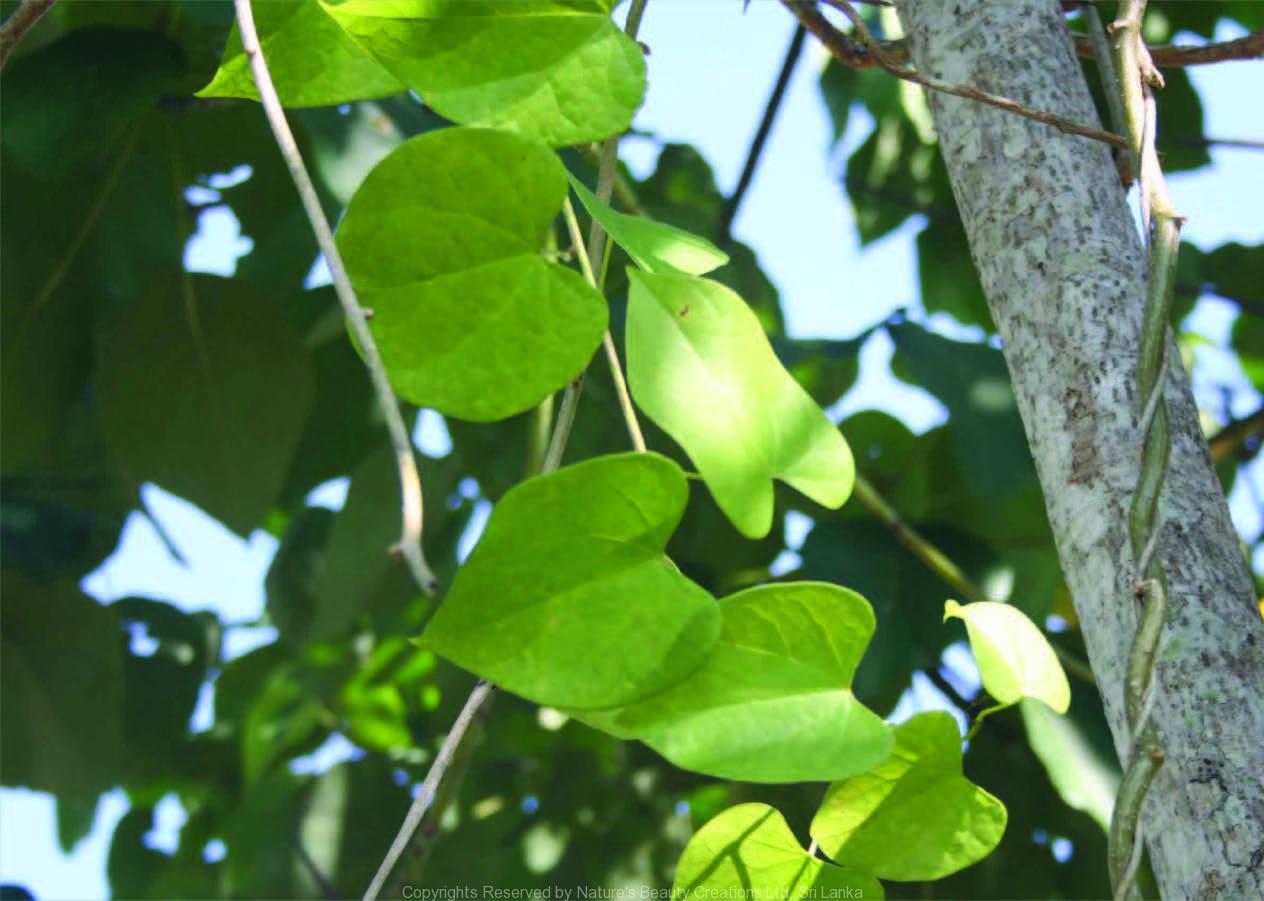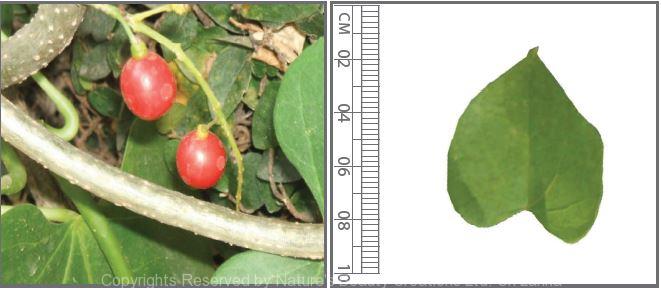

Traditional Knowledge
Useful plant parts :
Stem and Root
Uses in traditional medicine :
- Crushed stem juice is taken as a liver tonic
- Infusion of dried stem is taken for blood purification and to promote longevity
- Roots are used in chronic diarrhoea and dysentery
- Stem is used to treat fever, skin diseases, jaundice, syphilis, diabetes, snake bites and insect stings
Scientific Research
Chemical constituents:
Alkaloids: berberine, palmatine, magnoflorine, columbin and its derivatives, sesquiterpene: tinocordifolin, diterpenes: tincordin, tinosporide, phenylpropanoid glycosides: cordifolioside A and B, tinocordiside, syringin from plant
Bioactivity :
Stem extract: hepatoprotective, immunostimulative; ethanol extract of leaves: antiarthritic; aqueous and alcohol extracts of roots: hypoglycaemic, hypolipidaemic, antiulcer; cordifolioside A and syringin: immunomodulatory activities; n-butanol fraction of stem extract: redioprotective, cytoprotective
Clinical:
Ingredient of ayurvedic drug “Amrita Ghrita” which is used in mangement of “Amavata”
References : Bishayi, B. et al., (2002), Hepatoprotective and aimmunomodulatory properties of Tinospora cordifolia in CCl4 intoxicated mature albino rats, The Journal of Toxicological Sciences, 27(3), 139-146. Kapil, A. and Sharma, S., (1997), Immunopotentiating compounds from Tinospora cordifolia, Journal of Ethnopharmacology, 58(2), 89–95. Lekurwale, P. S. et al., (2010), Management of Amavata with ‘Amrita Ghrita’: A clinical study, Ayu, 31(4), 430-5. Nagarkatti, D. S. et al., (1994), Modulation of Kupffer cell activity by Tinospora cordifolia in liver damage, Journal of post graduate medicine, 40, 65. Patel, A. et al., (2013), Radioprotective and cytoprotective activity of Tinospora cordifolia stem enriched extract containing cordifolioside-A, Indian J Pharmacol, 45(3), 237-43. Paval, J. et al., (2011), Anti-Arthritic Activity of the Plant Tinospora cordifolia Willd, Journal of Herbal Medicine and Toxicology, 5(1), 11-16. Prince, P. S. M. and Menon, V. P., (1999), Antioxidant activity of Tinospora cordifoliaroots in experimental diabetes, Journal of Ethnophar- macology, 65(3), 277–281. Saha, S. and Ghosh, S., (2012), Tinospora cordifolia: One plant, many roles, Anc Sci Life, 31(4), 151-9. Sarma, D. N. K. et al., (1995), Antiulcer activity of Tinospora cordifolia Miers and Centella asiatica linn extracts, Phytotherapy Research, 9, 589–590. Singh, S. S. et al., (2003), Chemistry and Medicinal Properties of Tinospora cordifolia (Guduchi), Indian Journal of Pharmacology, 35, 83-91. Sharma, U. et al., (2012), Immunomodulatory active compounds from Tinospora cordifolia, J Ethnopharmacol, 141(3), 918-26. Sivasubramanian, A. et al., (2013), A new antifeedant clerodane diterpenoid from Tinospora cordifolia, Nat Prod Res, 27(16), 1431-6. Stanely, P. et al., (2000), Hypoglycaemic and other related actions of Tinospora cordifolia roots in alloxan-induced diabetic rats, Journal of Ethnopharmacology, 70, 9–15. Utpalendu, J. et al., (1999), Preliminary studies on anti-inflammatory activity of Zingiber officinale Rosc., Vitex negundo Linn and Tinospora cordifolia (willid) Miers in albino rats, Indian Journal of Pharmacology, 31(3), 232-233
Copyrights Reserved By
Natures Beauty Creations




